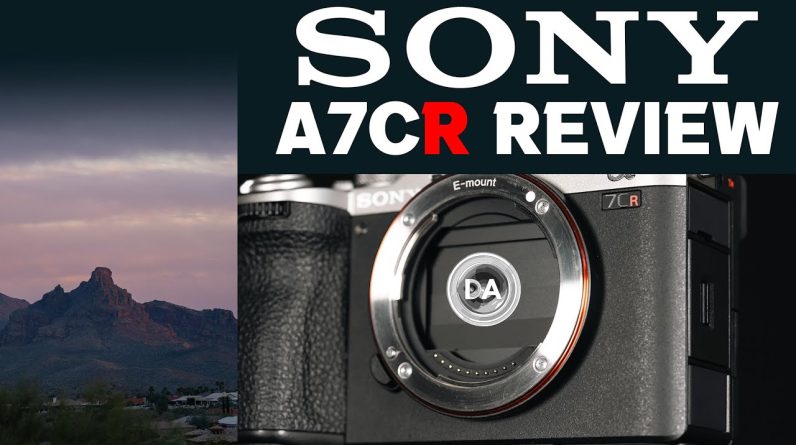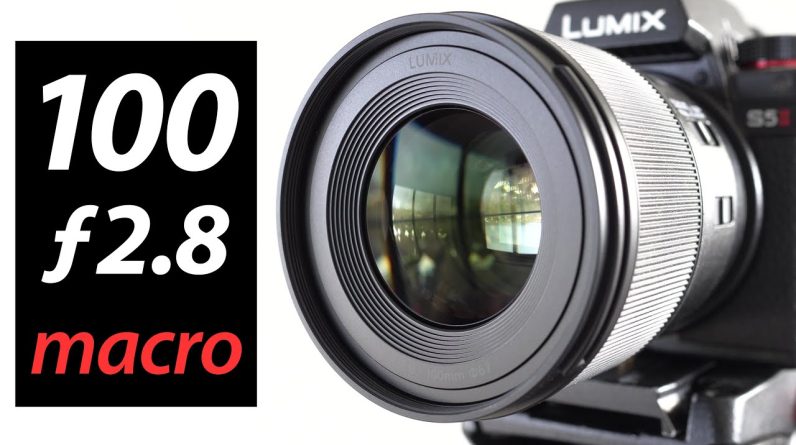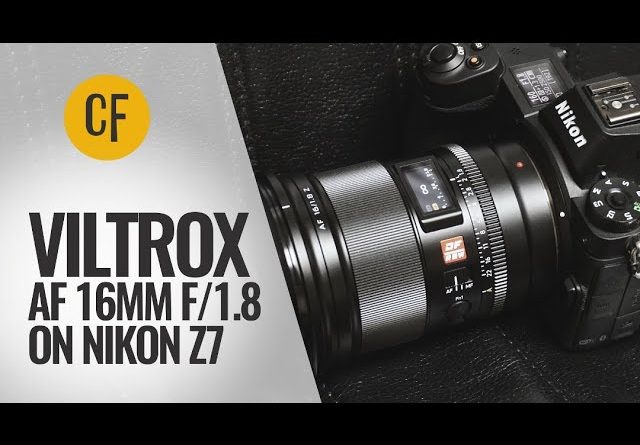Hi I'm Gordon from camera labs and this Video is all about tilt shift lenses and The unique perspective that they can Bring to Imaging lens shift lets you Transform this into this avoiding Converging vertical lines here's another Example where the vertical lines are Again leaning inwards and another one Using lens shift to avoid it while Maintaining a similar composition Meanwhile lens tilt lets you adjust the Plane of focus ensuring only the Subjects you want to kept sharp even if They're not all at the same distance Distance from the camera lens tilt can Also be used for miniature style effects Taking you from this to this where only A very narrow plane is sharp a trick That's particularly effective for video Especially when sped up and while both Tilt and shift effects can be simulated Digitally in post doing them optically Instead avoids cropping the image or Stretching it thereby maintaining the Maximum quality from your camera to Explain the theory and demonstrate it in Practice I'll be using one of the best Quality tilt shift systems systems to Date the Fujifilm gf3 mil f5.6 TS Mounted on a gfx1 102 body an Unapologetically high-end combination Launched in late 23 which brings the Flexibility of optical tilt and shift to A medium format body with 100 megapixels
As I show you the techniques involved I'll also take a look at the Quality and The functionality of this new lens so This video is going to be part review And part tutorial with the theory side Applying to pretty much any tilt shift Lens Now by controlling both the Perspective and the plane of focus tilt Shift lenses are not only ideal for Exacting architectural and Landscape Photographers but also those who want to Know precisely what is and what isn't in Sharp Focus shifting a lens eliminates The need to point a camera up to capture Say the top of a building thereby Avoiding converging lines and keeping Verticals parallel to the edges of the Frame meanwhile tilting a lens angles The plane of focus so it's no longer Parallel to the sensor providing unique Control over the depth of field and Exactly what is in Focus till shift lens Is typically feature a pair of dials to Independently adjust the amount of tilt And shift along with locks to keep these Settings in place and the chance to Rotate portions of the lens to apply the Effects horizontally vertically or Pretty much anywhere in between since These adjustments place the sensor Beyond the usual Imaging circle of a Standard lens though tilt shift lenses Need larger Imaging circles to Accommodate these movements the larger
Imaging Circle coupled with the extra Controls inevitably makes tilt shift Lenses larger heavier more complex and Ultimately more expensive than standard Lenses of a similar focal length and Aperture and since it's not possible to Autofocus them using traditional methods They're generally manual focus lenses Only that said since the camera's angle And any adjustments need to be very Precise for the best results most tilt Shift photography is taken from a tripod Anyway and since the subjects are also Generally static manual focusing on them Isn't going to be a big issue now if You're a full-frame shooter who wants a Wide angle tilt shift lens for Architectural or landscape work Canon's Tsse 24 mil f3.5 L2 is a popular choice Weighing 780 G costing around $2,000 or Pound and as a DSLR lens it can be Adapted to most mless systems in Contrast fujifilm's gf30 mil f5.6 TS is Designed for the larger gfx medium Format system and while it delivers a Similar field of view to 24 mil on a Full-frame body roughly 84° across the Diagonal the larger sensor behind it Demands a bigger Imaging Circle even to Start with and once you enlarge this Further to accommodate tilting and Shifting not to mention optimizing it For bodies with 100 megapixels or more In the future you've got a pretty hefty
Lens the gf30 TS measures 87 mil in Diameter it's 139 mil long weighs 1,340 G and costs around $4,000 or pound while I did try shooting a little bit with it Handheld on the gfx1 1002 body Exploiting the Ibis stabilization this Really is mostly a tripod combination Particularly if you want the best from The tilt shift capabilities recognizing This Fujifilm supplies the lens with a Removable tripod collarin foot sadly the Foot is not dovetailed to slide directly Into ARA Swiss clamps but it is Optimally positioned for the adjustment The lens can also rotate within the Collar which is useful as you configure It for the desired effect Fujifilm also Supplies the lens with a substantial Metal Hood which screws into the end of The barrel having first removed the ring And this also includes a 105 mil filter Thread as the bare lens itself cannot Directly accommodate filters on the end Of its Barrel if you prefer shooting Products food or macro or prefer using a Longer focal length Fujifilm also offers A 110 mil f5.6 Ts for around 35,000 or Pound to illustrate the difference Between the gfx and fullframe formats And the impact of tilt shift Capabilities on both I've made a scale Drawing for you showing the gfx sensor On the left and a fullframe sensor on The right now let's put an Imaging
Circle around each sensor this is what a Standard lens needs to deliver for Sharp Details right into the corners on each System now if you were to shift the Sensors to adjust the perspective though You will see how they will go beyond the Imaging circle of a standard lens with a Significant impact on the quality or Even just plain darkness in that portion That's why tilt shift lenses need larger Imaging circles to start with so let's Return the sensors to their middle Position and now enlarge the Imaging Circles for each starting with Canon's Tsse 24 mil this lens features 12 mm of Shift on either side enlarging the Fullframe circle diameter from around 43 Mil to 67 mm meanwhile the Fujifilm gf3 Milts features 15 mm of shift on either Side enlarging the 55 mil diameter Circle of the GF format to a huge 85 mm No wonder it's such a substantial lens Either way it's clear how the larger Imaging Circles of both lenses can Accommodate shifting and also how doing So can effectively include different Portions of the subject like the top of A building or a tree without angling the Camera or P down on the gf30 TS the Shift control is operated with a dial Closest to the mount there's a scale Indicating the position from 15 mil in Each Direction and a locking screw on The opposite side to keep it in place
Always remember to loosen that when you Make your adjustments here I've turned The camera by 90° into the portrait Orientation where the shift is Effectively now moving the sensors side By side inside the Imaging Circle push a Lever by the mount though and you can Effectively rotate the shift axis by up To 90° in either direction in this Example now moving the sensor up and Down inside the Imaging surface Circle This lens has Notches at 30° intervals Although the mechanism should just about Hold the body in between if you prefer Notice the information in the corner on Screen as I make adjustments on the gfx1 102 body with the gf30 TS lens actually Reporting the degree of shift and shift Rotation this information is also stored In the exif data and it could be used in Future software to help Stitch or Process multiple images I believe this Is pretty unique for a tilt shift lens But here it only applies to the shift Adjustments and it also requires a gfx Body with a firmware update here a video I recorded with a gfx 102 and 30 milts To demonstrate how shifting can avoid The effect of converging lines I'll Start with a camera pointing upwards to Capture the top of the building but in Doing so the vertical lines are now Converging to fix this optically first Lower the angle of the camera until it's
Perfectly level and pointing directly Square onto the subject this will ensure The vertical lines are kept parallel to The edges of the frame but of course now You've lost the top or bottom of the Subject you're cropping it off and You'll no longer see say the top of a Building or a tree but with a shift lens These portions of the view are still Generally within the larger Imaging Circle it's just that they're beyond the Coverage of the sensor that's inside it So simply adjust the shift to Effectively move the sensor up or down Within the Imaging Circle and thereby Reveal more of the top or bottom of the View while maintaining those nice Straight lines as the camera isn't being Angled up or down it's still pointing Straight forward once again the larger Imaging Circle already delivers a wider Field of view it's just now up to you Which part of it you're going to record It's not just about seeing more of the Subject above the frame either here's a Shot looking Square onto a building but Now one where I've used lens shift to Look down some stairs without angling The camera downwards so shifting has Changed my perspective here while Maintaining those nice Square geometric Lines the range available when shifting Also allows you to make p panoramas Without rotating the camera having to
Deal with that Distortion just take Images at each end of the shifting range And Stitch them together in software Afterwards for a distortion free result That's packed with resolution here's a Single frame looking up at some trees And now for a leveled version to correct The vertical lines and using shift to Deliver a similar composition next Here's the view from the same position But with maximum shift up and down Before then stitching these two images Together to make a panorama version now With two 100 megapix frames overlapped Here the final image measures almost 200 Megapixels moving on the Tilt adjustment Is made by a second di which on the gf30 TS can angle the body by 8° either way Like the shift adjustment this can also Be held in place by a lock on the Opposite side although this is joined by An additional locking switch to prevent Any unexpected use as the process is Generally less used than shifting again A lever can rotate the mechanism by 90° Although this time with a not halfway at 45° coupled with the tripod collar Though it's possible to rotate and Adjust both the Tilt and shift Mechanisms into almost any position or Direction and this gives this lens more Flexibility than most tilt shift lenses Now unlike the shift control though Neither the degree of tilt or tilt
Rotation are reported on screen or saved In the exi file it's only the shifting That is now tilting a lens angles the Plane of focus normally this focal plane Is parallel to the sensor so if you were To focus on one subject anything that's Also the same distance away will also be In Focus I find it easier to think of The plane of focus as being a sheet of Glass that's in front of the camera and Normally parallel to the sensor and Which you can move closer or further Away again anything on this plane will Be sharp tilting though will angle This Plane either horizontally or vertically Now subjects on this plane will still be Sharp but this time the plane is tilted Towards or away from the sensor Some photographers exploit this to keep More of a subject in focus without Increasing the depth of field you see This used a lot on food photography Imagine a plate on a table others use it For dramatic or unusual effects on more Distant subjects here's a standard shop That I took with no tilt and now one With some horizontal tilt delivering a Narrow vertical strip that sharp Allowing you to concentrate on a Specific portion of the image while Blurring the rest here's another example Using horizontal tilt where is providing A kind of shallow depth of field effect But without adjusting the aperture and
With a more extreme result and now Here's another example with some Vertical tilt to deliver a horizontal Strip of sharp Focus for that popular Miniature effect okay now for some Optical results from the Fujifilm gf3 Mil TS starting with close focus and how Much blurring you could enjoy without Using any tilt or shift here's the Result from the closest focusing Distance of around 30 cm from the focal Plane which works out a roughly half Half that from the tip of the lens to The subject itself the maximum aperture Of f5.6 may not sound significant but as You can see it's capable on this format And distance of delivering reasonable Boker balls which are also kept Reasonably circular and now for the same View as I gradually close the aperture Down next for my standard distant view Of bright and Pier angled so that Details run into the corners starting Here at the maximum aperture of F5.6 as I zoom into the center of the Image the details are very crisp as You'd expect and in my test there was no Benefit to the sharpness or the contrast In this area anyway when stopping down Although do note there can be softening Due to defraction at F16 and smaller Apertures so be warned moving out into The corner tells the same story Excellent performance right out of the
Gate at the maximum aperture with sharp Details high contrast and essentially no Vignetting to worry about either just For comparison though here's the same View shot at f8 now of course this Degree of perform performance isn't Surprising since this view is well Within the substantial Imaging circle on This lens so it's nowhere near the edges Where it may reduce in performance at Least potentially so to see how the Quality Compares when the lens is Shifted here's another view of the pier With no shift at all where the quality Is again excellent across the frame now I took this picture at f8 an alpha Version with the maximum horizontal Shift to the left showing how much more The views within the Imaging Circle Taking a closer look at the extreme left Hand edge of this shifted image at FH Shows how the details are remaining Extremely sharp and very well corrected So now let's Zoom back out to see the Whole view before switching it for a Version taken from the same position but With the maximum shift to the right Remember I did not move or adjust the Camera for either of these shots it's Pure lens shift taking a closer look at The extreme right hand side again reveal Sharp details and nothing to complain About proving the gf30 TS lens is very Well corrected within its entire Imaging
Circle and while my exposure here was a Little bit different between these two Shifted images it's clear again how they Could in theory be stitched together to Make a wider Panorama image without Needing to rotate the camera and deal With the subsequent Distortion and Finally I asked my friend and Collaborator Ben Harvey how he uses tilt Shift lenses in his job as a Professional architect I'm shooting some Interiors at the grain store which is a Property in Lewis and I'm using the gfx 100 with the tilt shift lens and the Reason I might use a tilt shift lens for Interiors is mainly just Minor Adjustments to the composition sometimes You can adjust the height of the camera And that will fix your composition but There are other times where for example I've got a sofa directly in front of the Camera and if you take this composition Here you can see that the foot stol is Cut off the bottom of the frame if I Lower the entire camera the sofa appears In the composition so what I can do is I Can use the shifting mechanism to lower That and include all of the foot stol And again if this light at the top here This feature hanging light were to be on The edge of the frame again I would just Use the shifting mechanism just to Perfect the Composition okay whilst I'm here let me
Show you the real purpose of a tilt Shift lens so as you can see spin the Camera around and this is set to default Position so if this was a 24 mm lens This is the highest my camera tripod Will go to without raising the central Column and you can see what the Composition of the building is like However ideally I don't want to chop the Top 30% of the building off so what I do I can now shift This and include the top of the building That's the main benefit of one of of These lenses and you can see this Strange Mechanism Right this is the magic of tilt shift Lenses but now I can Include the whole building without Tilting the camera up and distorting Things so there you go okay now for my Verdict tilt shift lenses aren't Necessary for exacting architectural Landscape photography but they certainly Make your life a lot easier from typical Shooting positions while also avoiding The loss of quality from digital Manipulations and if you're looking for The ultimate quality from tilt shift It's hard to beat fujifilm's 30 and 110 TS lenses mounted on one of their medium Format gfx bodies with the latest models Delivering hugely detailed 100 megapix Images with plenty of dynamic range to
Play with the 30 mil was a superb Optical performing my tests pined sharp Across the entire Imaging Circle and With the flexibility of independent tilt And shift rotation along with a tripod Collar and shift adjustments stored in The exif data sure the lens is Unapologetically Hefty with a price tag Beyond full frame but if you're a Professional or a high-end Enthusiast Who demands the best results from a tilt Shift system you'll already be Contacting your bank if you like the Idea of tilt shift photography but on a Lower budget Canon's tsse 24 mil 3.5 Remains a great option at around half The price that can be adapted to Multiple full-frame systems while third Part arties offer even cheaper Alternatives some of which may only Provide shifting capabilities such as Lowers 15 mil 4.5r Zer dshift lens Meanwhile at the real budget end tilt Enthusiast could try out an old lens Baby or one of their adapters of course You could experiment with software based Effects totally free of charge and for The cheapest Optical shift option of all Don't forget to just keep your camera Perfectly level and frame your subject By adjusting your height relative to it Rather than angling your camera up and Down after all even if you're Photographing a building there could be
A handy Bridge or platform maybe a Natural hill or even another building Opposite that you could shoot from that Avoids you from having to point your Camera up or down meanwhile wide angle Lenses should ensure you can capture the Full subject when face on even if you do Need to subsequently crop out some blank Space above or below for example I took This photo of New York's flat iron Building with a standard wideangle lens From raised position several stories up Allowing me to avoid angling the camera And keeping those vertical lines mostly Parallel to the edges of the frame or in This example I used the wide-angle lens Of my phone to photograph this building Square on now in doing so I had way too Much ground in the bottom of the picture So I just cropped it off and I was left With one that had some nice vertical Lines so let me know in the comments if You're a tilt shift photographer how you Use these types of lenses and whether You'd be personally tempted by Fujifilm's medium format option I hope You found this tutorial and review Useful thanks for watching and I'll see You next time bye-bye






